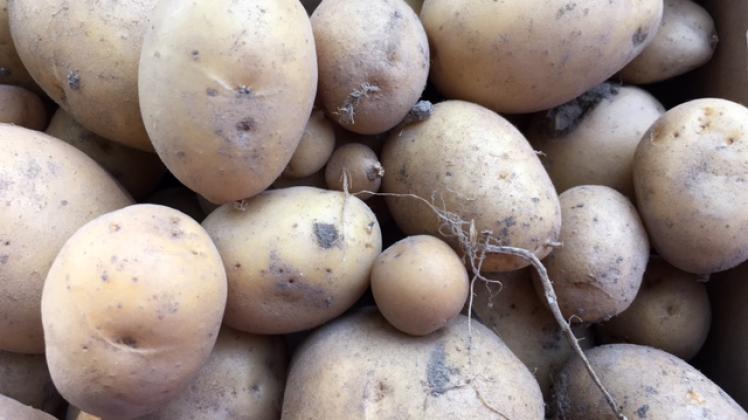Gran Bretaña: Can we use the dormancy of potato varieties for long term storage in the post CIPC-era
AHDB has committed to increasing industry knowledge of the dormancy of the most popular varieties of potatoes, particularly following the loss of CIPC.

Much of the field trial work is taking place through the SPot Farm network to give growers and store managers a chance to engage with the process as the project progresses.
CIPC’s approval withdrawn
Last month store managers received the news they’d long been dreading but knew was likely: following a prolonged consultation the European Commission decided not to renew the approval of CIPC for use as a sprout suppressant in potato storage. As one of the most widely used chemicals, its loss presents a major challenge to the industry.
The withdrawal of CIPC’s approval came following regulatory changes to the use of another sprout suppressant Maleic Hydrazide (MH). However a reversal of the decision this week provided some relief to store managers: the active is important for the success of other sprout suppressants when used in combination with them.
Despite this potato storage continues to face an uncertain future as CIPC is generally considered the most effective active available. While growers elsewhere in Europe have access to DMN (1,4- Dimethylnapthalene), approval for its use as a sprout suppressant has not yet been granted in the UK.
New research to focus on dormancy
In the absence of a single product as effective as CIPC, a more holistic approach is required in order to meet the challenge of storing potatoes. AHDB’s Sutton Bridge Crop Storage Research team has been preparing for the loss of CIPC for some time and been hard at work researching alternative approaches.
One such project aims to determine and increase industry awareness of the dormancy of different potato varieties. Currently information on the expected dormancy period for potato varieties – the period before sprouting begins - is both sparse and conflicting, meaning growers are compelled to use a one-size-fits-all approach when applying sprout suppressants.
By gathering independent data on individual varieties staff at Sutton Bridge aim to develop a standardised assessment methodology to rank the dormancy characteristics of popular potato varieties grown in the UK. Growers will be able to use the results to better tailor varieties to growers store specifications.
Sutton Bridge Crop Storage Senior Scientist Adrian Briddon said:
“What we’re looking to do is improve the efficacy of sprout control and reduce costs by using longer dormant cultivars. Varieties are not all interchangeable, but sectors and customers will usually have a range, and it’s within this range that we are looking to gain advantages.
“It isn’t all down to dormancy either. Sprouting pressure and sprout suppressant requirement is also related to storage temperature. When we also have information on low temperature tolerance – the ability to hold varieties at lower temperature without accumulating fry colour damaging reducing sugars – then we will be able to practice integrated control of sprouting and minimize our use of post-harvest treatments.
“By developing a standardised methodology for dormancy, we want to address some of the knowledge gaps we have of individual varieties. We can then provide a tool that can be used alongside other methods for a more holistic approach to sprout suppression.”
SPot network to play a key role
The project makes use of AHDB’s Strategic Potato (SPot) Farm network: Sutton Bridge is currently overseeing trials at two SPot farms looking at the dormancy characteristics of up to 40 popular varieties, as well as some new entrants to the market.
One of these trials is currently taking place at Heal Farms in Shropshire: the host of SPot West. Here a total of 48 different varieties have been planted in single 1.83m wide bed plots of 8m in length. Established chipping, crisping, pre-pack and salad varieties are under investigation, in addition to some new entrant varieties. The crops are being grown under conditions appropriate for the farm.
AHDB Knowledge Exchange Manager Bill Watts oversaw the planting process earlier this year:
“At SPot West 29 of the 48 varieties planted account for 65% of what was planted in 2017, with the remainder making up new entrants to the industry.
“We have a good representation of the most popular varieties, meaning the data we collect will be highly relevant to growers.”
After burn-off crops will be harvested and transported to Sutton Bridge for storage and assessments, generating the characteristic ‘S’ shaped curves for each variety. The staff will collect samples from all of the trial sites across the SPot network and take them back to the lab where they will be stored at 15 °C. From there they will be tested on a weekly basis over approximately a 6 month period. The treatments are replicated at RJ and AE Godfrey in North Lincolnshire: the hosts of SPot North.
Fuente: https://ahdb.org.uk/news/can-we-use-the-dormancy-of-potato-varieties-for-long-term-storage-in-the-post-cipc-era







